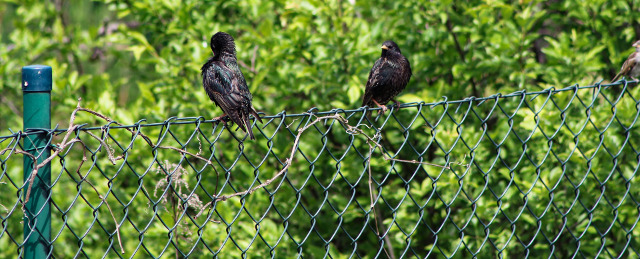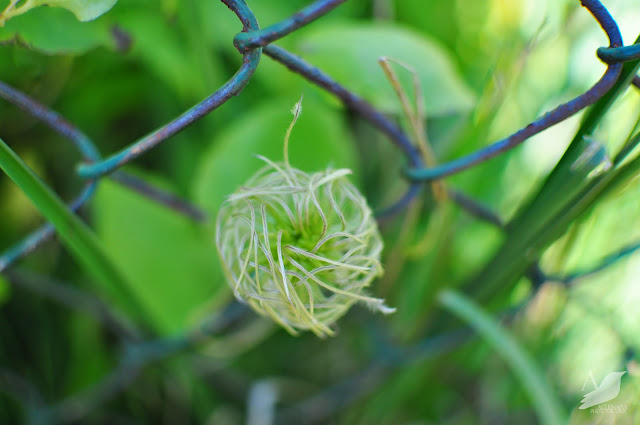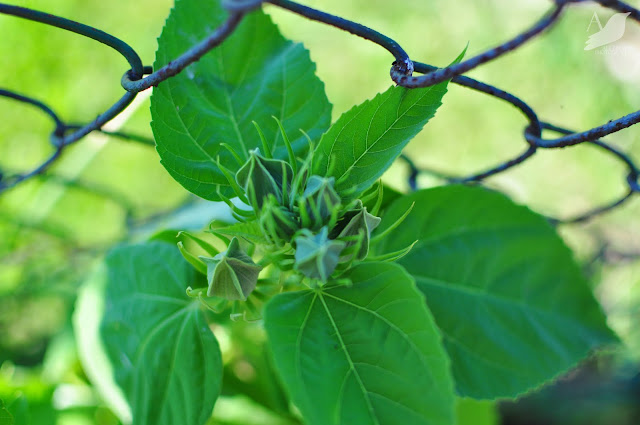Sometimes useful things are ugly. A general rule we try and follow is that things should be useful or beautiful and 90% of the time it should be both. Is it gorgeous? Is it super useful? Is it useful and beautiful? If the answer is yes, then it can stay. If it is ugly, it goes (unless it is something super useful like a toothbrush or a bottle of mouthwash). If it is useless it goes (unless it is beautiful like silly paper garlands). If it isn't a strong collaboration of the two it goes.
So what happens when you need something that is very useful, but it is just hideous in your eyes? Enter a chain link fence. Stage right.
In some cases, you can just remove the fence, and have a beautified space, but sometimes those fences are necessary. They can surround the pool, keep dogs and kids in the backyard, or keep nosey neighbors on their own property. Chain link fences are also very difficult to remove once they’ve been installed. Concrete can go deep into the ground for each post. And the fence itself is heavy to move once you get the posts out of the ground too.
Anyway, you have your ugly fence, and you need to keep it and appreciate its functionality, but hate the look. Here are a few tips for making it look a little less ugly.
#1 Paint The Chain Link Fence Green
Buy a green fence, or paint it green. If your fence is anywhere near a lawn or plants, it is going to disappear a bit if it is green, right? Right. If your fence is in the middle of a bunch of pavement, then you have bigger problems than an ugly fence, and silver or grey will blend right in.

#2 Grow Plants On The Chain Link Fence
Chain Link fences are perfect for plants because a) they are absolutely perfect for climbing plants and b) they can help deliver nitrogen to your plants. Climbing plants climb by twirling around supports or gripping onto them, and the size and design of a chain link fence is perfect for both. Clematis and climbing roses are perfect for chain link fences. But you will need many many many plants to cover the entire thing (we don’t see this as a problem)! The clematis is especially perfect because it weaves its way in and out of the links, blooms beautifully and then leaves these wonderful little puffy seed pods.

Chain Link Fences Add Nitrogen To The Soil?
Lightning fixes the nitrogen in the air making it available to plants as nitrogen oxides. When your plants are hanging on and planted under a metal chain link fence, the chances of attracting lightning are quite high and while you don't want to be around if lightning is anywhere near your metal fence, the plants will love the extra nitrogen. They gobble it up and put on new growth the next day. Gardeners are known to string copper wire around their tomato plants and cabbage patches to harness this benefit for their plants.
#3 Hide The Chain Link Fence
Your fence is already green, so the next step is adding more beautiful green plants to help break up the prison look of mile after mile of metal links. One of our favorites for a chain link fence are hibiscus plants. They are tough and they are easy to propagate. And they have gorgeous blooms. GORGEOUS!
Even the buds are quite nice...see?

Hibiscus send off new shoots every spring in a cluster straight up from the ground. The stems are strong, yet flexible, so they are perfect for a chain link fence because they weave themselves on either side of the fence, camouflaging both sides from view. They generally grow about 3-5 foot tall and are the perfect base plant for your fence. To propagate the plants, simply chop off a cutting and root it or layer your plant.
After you have a climber and some base plants (like clematis and hibiscus), a few large, tall anchor plants give variety to your plantings. We like using evergreen shrubs to provide year round cover for the fence. Some of our favorites are arborvitae, juniper and boxwoods. Boxwood does especially well in the shadier sections of the fence. Arborvitae and juniper will need full sun locations.
Ornamental grasses also provide year round cover for fences, and are very hardy. So put those in areas that are hard to get to because you can ignore the plants for the most part, once they are established. Here is a more extensive list of plants you could use around the fence:
Climbers: rose, clematis, sweet peas, peas, ivy, cup and saucer vine, trumpet vine (be careful...this one is beautiful, but can be invasive in some areas)
Foundation: Hydrangea, various conifer shrubs in rounded habits, daylilies, peonies, Montauk daisies, hollies.
Tall Accents: annual sunflowers, hollyhock, cannas, grasses, various conifers with vertical habits...the list could go on and on and on...
Do you have any good tips for covering up an eyesore?? Write us below and we can add it to our list!
 |
Author Chris Link - Published 12-18-2021 |
